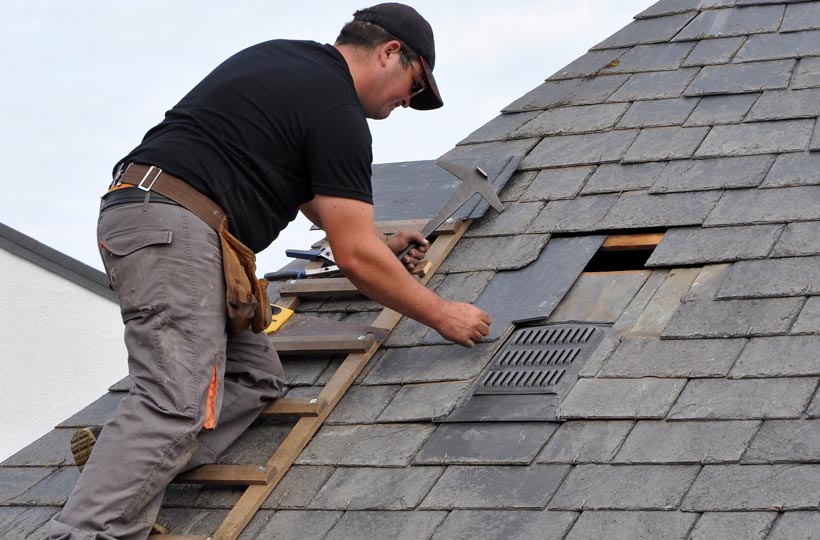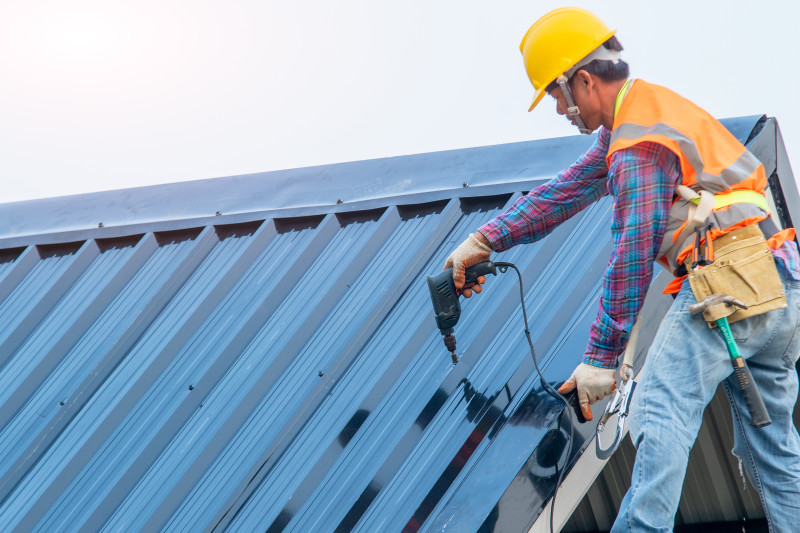Keep Dry Roofing St Peters MO: Quality Roofing Services for Homes and Companies
Key Considerations for a Successful Roofing Setup: Achieving Longevity and Effectiveness
In getting started on the journey of roof installation, one have to focus on vital considerations to make certain both longevity and effectiveness. The option of products, tailored to endure regional climate conditions, plays a crucial role in keeping architectural integrity. Just as important is the layout, which ought to accommodate appropriate water drain and provide appropriate support. Taking on best practices throughout installment can significantly minimize prospective problems such as dampness build-up and energy ineffectiveness. As we check out these aspects, it becomes obvious that a successful roof installation is not simply concerning covering a framework however concerning crafting a durable and sustainable remedy. What are the vital components that truly make a difference?
Picking the Right Materials

Environment plays a pivotal role in product selection. In regions susceptible to heavy rainfall or snow, materials like asphalt roof shingles or metal roofing with high water resistance are suggested. Alternatively, in warm environments, materials with reflective residential properties, such as trendy roof membrane layers or tiles, can help in reducing power expenses by deflecting sunlight.
Budget plan factors to consider likewise influence material choice. While costs products like slate or clay floor tiles provide resilient efficiency, they include higher ahead of time prices. They can show economical over time due to their marginal maintenance needs and prolonged life-span.
Finally, the building design of the building must integrate with the roof covering material. Conventional homes may benefit from wood tiles, whereas modern-day frameworks could opt for smooth metal surfaces. By carefully considering these variables, you can choose products that line up with both practical and visual objectives.

Comprehending Roof Covering Design
Understanding roofing system design is vital in attaining a well-functioning and visually pleasing structure. The design of a roofing system influences not only the aesthetic allure but also the architectural stability and performance of the structure. An attentively made roof covering can boost the total building style while guaranteeing efficient water drainage, insulation, and ventilation.
Trick aspects of roofing style consist of the pitch, form, and architectural support group. The pitch, or slope, determines just how effectively water and particles are shed from the roofing surface, influencing the life expectancy of roof covering products. Common roof shapes include gable, hip, level, and mansard, each offering unique advantages and aesthetic high qualities. For instance, gable roof coverings are preferred for their simplicity and efficient water dropping, while hip roofing systems provide phenomenal stability in high wind areas.
Structural assistance systems, such as trusses and rafters, are critical in dispersing weight and preserving the roofing's integrity. Appropriate style makes certain that the roofing can stand up to ecological loads and withstand contortion. Additionally, incorporating functions like overhangs and eaves can protect the structure's façade and enhance energy performance by offering shade and decreasing warmth gain.
Eventually, a well-considered roof covering design equilibriums form, work, and durability, adding to the long-lasting success of the my latest blog post installment.
Climate Considerations

In hot and warm climates, roofing products need to mirror, instead of soak up, solar warm to keep power performance and avoid excessive thermal growth, which can result in product degradation - Keep Dry Roofing St Peters MO. Alternatively, in cooler regions, materials should provide appropriate insulation to avoid heat loss and hold up against freeze-thaw cycles that can trigger fracturing and other architectural problems
In addition, the choice of color and finishing can dramatically affect a roof's thermal performance, specifically in areas with extreme temperature variants. Local building regulations usually offer advice on ideal materials and styles, mirroring regional environment concerns. For that reason, a comprehensive understanding of weather problems is vital for selecting products and designs that make certain a roof covering's optimum efficiency over its life-span.
Setup Best Practices
Efficient roof installment is a vital part of making sure long-lasting durability and performance. Utilizing high-quality tiles, underlayment, and flashing tailored to the details climate and structure layout will certainly enhance the roof's resilience.
Just as essential is the prep work of the roof covering deck. Ensuring that the deck is clean, dry, and structurally audio prior to installment protects against issues such as leaks and premature wear. Appropriate ventilation is an additional crucial factor to consider, as it minimizes dampness accumulation and thermal read anxiety, thereby prolonging the roof's lifespan.
Accuracy in dimension and alignment throughout the setup procedure is critical. This entails accurate positioning of roof shingles and meticulous focus to overlapping, which prevents water access. Using specialist, experienced labor guarantees these criteria are fulfilled, minimizing the danger of errors that might jeopardize the roofing's performance.
Energy Performance Approaches
Enhancing a roof covering's energy effectiveness is a calculated consideration for lowering energy costs and environmental impact. By picking suitable materials and modern technologies, property owners and contractors can substantially boost the thermal performance of a roofing system, hence decreasing energy consumption. Among the key methods entails the use of reflective roof materials, which disperse more sunshine and absorb less warmth. Bonuses This can result in a considerable reduction in cooling down costs, specifically in warmer climates.
Additionally, the consolidation of sufficient insulation is essential in avoiding warmth transfer in between the inside and outside of a building. Insulation products with high R-values, such as spray foam or rigid foam boards, work in maintaining a regular interior temperature, thus maximizing a/c system efficiency.
In addition, the assimilation of solar panels on rooftops not just produces renewable energy but can also offer color, additional minimizing warm gain (Keep Dry Roofing St Peters MO). Developments like amazing roofings, which utilize coatings to show even more sunshine, are additionally acquiring popularity for their capability to lower roof covering temperatures
Final Thought
In verdict, accomplishing a successful roof setup necessitates an extensive strategy that integrates the selection of premium materials customized to specific climatic conditions, thoughtful style considerations for optimum drainage and architectural integrity, and adherence to precise installment methods. These components jointly ensure the avoidance of dampness buildup and thermal anxiety, consequently improving the roofing system's longevity and effectiveness. Integrating techniques to boost power performance better adds to lowering maintenance demands and decreasing power usage over the roof's life-span.